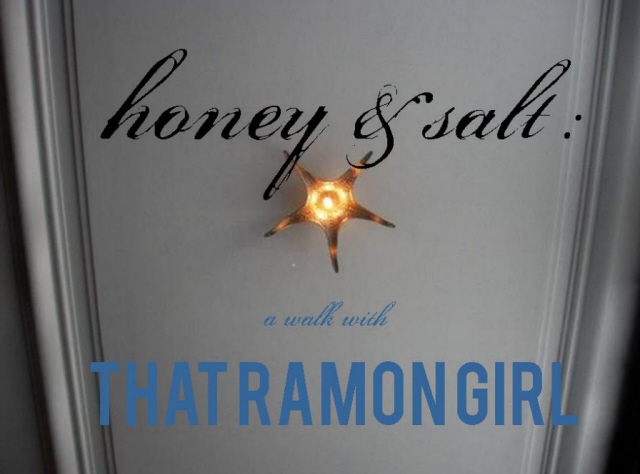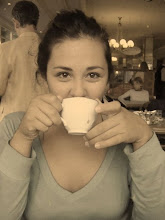Background
The last time I can remember having taken an art course was in fourth grade. I'm from McAllen, a South Texas town on the border of Mexico, where, in a hasty effort for standardization and a misguided attempt at assimilation, the maths and sciences trumped the arts. During the nineties, NAFTA led to great economic expansion and homogenization, wherein clunky corporate outfits dotted our landscapes and filtered into our school systems, posturing students for careers as doctors, lawyers, and businesspeople. Notwithstanding the academic climate, it was apparent that the maths and sciences were not my strengths, and as I grew older, I sort of fell into believing that, as an apt conversationalist and language user, my life must be spent as some kind of editor or publicist. Once I got to Mary Baldwin College, imbued with the belief that my only strengths were in language arts, I eagerly accepted the courtship of the English and History departments, but, not able to bridle my curiosities and focus my energies, found myself bingeing on various fields every semester: anthropology, communication, gender studies, philosophy. In retrospect, it's clear that despite my best attempts at internships and inter-curricular participation, I simply wasn't excited enough about one subject to focus and thrive. On top of that, family matter disrupted my collegiate tenure, and by my third year, I'd begun to lose interest. Unable to take a legitimate break from my studies because of family pressures, I floundered, finding full-time employment a welcome diversion from my academic inertia.
It comes as no surprise that after having received my diploma, the same listless resignation I'd experienced during school remained. That, coupled with the family matter that had scrambled the import of my academic ownership, anchored me in the Shenandoah Valley. Opportunities are marginal there, so I ambled from a night-shift janitorial job at a local juvenile center to a gig as a country club waitress, then took a gratifying spot as a Spanish teacher. It was in this position, strangely, that it dawned on me how much I emphasized the visual aspect of my teaching environment; at one point, I remember shuddering to realize that I thought more about my colorful homemade classroom decorations than I did about my lesson plans! The year flew by, though, and even though I knew I wasn't the most effective teacher, I was happy to have a challenging job. But everything changed that spring when, after renewing my contract for the following year, my dear father down in Texas had a major stroke. As he had been living alone and was without stable support, I was impelled to come home. That decision was an unemotional one - the only right one to make - and despite the fact that all clear signs pointed toward the opposite 'Stay in Virginia,' 'Stay with Your Steady Job,' I went home to help out. Despite the obvious emotional expense, it was the most important decision of my life: the first I'd ever made according to my own compass, irrespective of much else.
It was during that year of working with my dad that any pretension I'd had about working wore away. I knew that I was bright and could do a few things, but when I was offered positions in various fields that didn't inspire me, I decided to take a sabbatical so that my soul could breathe a little. Some friends and I had reserved a rental home in France before my dad had gotten sick, so it wasn't that I felt hemmed in or anything - I wasn't looking for an awakening - I was just excited to take my mind off my dad's situation and the tensions therein. Ironically, it wasn't the two months in France that piqued my interest in design; it was that, when I returned, I was stunned to see that out of the 2,000 pictures I'd taken, the vast majority were of interior spaces! Lush textiles, vivid colors, furnishings from the quaint to the quirky, peppered my lens and captivated my attention. My imagination was abuzz.
I should say, then, that I do not know precisely how or when I found myself knowing that I am made to be an interior designer, but that once I'd realized it, once I admitted it to myself and started carefully scanning my friends for their opinions, nothing had ever been so obvious. I'd spent five years as a graphic designer's nanny, who somehow picked up on my penchant and invited me to do some freelance design for her. Many of my friends had come to me with requests for help on their apartments or fashion, no matter that I am not a fashionable person. Foreign as the arts were to me, I had always carried the assumption that everyone cared as much as I did about the energy of a room - that it wasn't anything particular about me or my talents, but that it was more of a universal interest. I'd been boggled when competency and career tests would come back to me, telling me that my strengths are in visual/spatial configuration and puzzles, rather than writing. Even more enticing was the prospect of working with people, which would satisfy my talkative, relational nature, and to do so within the parameters of a creative correspondence.
It comes as no surprise that after having received my diploma, the same listless resignation I'd experienced during school remained. That, coupled with the family matter that had scrambled the import of my academic ownership, anchored me in the Shenandoah Valley. Opportunities are marginal there, so I ambled from a night-shift janitorial job at a local juvenile center to a gig as a country club waitress, then took a gratifying spot as a Spanish teacher. It was in this position, strangely, that it dawned on me how much I emphasized the visual aspect of my teaching environment; at one point, I remember shuddering to realize that I thought more about my colorful homemade classroom decorations than I did about my lesson plans! The year flew by, though, and even though I knew I wasn't the most effective teacher, I was happy to have a challenging job. But everything changed that spring when, after renewing my contract for the following year, my dear father down in Texas had a major stroke. As he had been living alone and was without stable support, I was impelled to come home. That decision was an unemotional one - the only right one to make - and despite the fact that all clear signs pointed toward the opposite 'Stay in Virginia,' 'Stay with Your Steady Job,' I went home to help out. Despite the obvious emotional expense, it was the most important decision of my life: the first I'd ever made according to my own compass, irrespective of much else.
It was during that year of working with my dad that any pretension I'd had about working wore away. I knew that I was bright and could do a few things, but when I was offered positions in various fields that didn't inspire me, I decided to take a sabbatical so that my soul could breathe a little. Some friends and I had reserved a rental home in France before my dad had gotten sick, so it wasn't that I felt hemmed in or anything - I wasn't looking for an awakening - I was just excited to take my mind off my dad's situation and the tensions therein. Ironically, it wasn't the two months in France that piqued my interest in design; it was that, when I returned, I was stunned to see that out of the 2,000 pictures I'd taken, the vast majority were of interior spaces! Lush textiles, vivid colors, furnishings from the quaint to the quirky, peppered my lens and captivated my attention. My imagination was abuzz.
I should say, then, that I do not know precisely how or when I found myself knowing that I am made to be an interior designer, but that once I'd realized it, once I admitted it to myself and started carefully scanning my friends for their opinions, nothing had ever been so obvious. I'd spent five years as a graphic designer's nanny, who somehow picked up on my penchant and invited me to do some freelance design for her. Many of my friends had come to me with requests for help on their apartments or fashion, no matter that I am not a fashionable person. Foreign as the arts were to me, I had always carried the assumption that everyone cared as much as I did about the energy of a room - that it wasn't anything particular about me or my talents, but that it was more of a universal interest. I'd been boggled when competency and career tests would come back to me, telling me that my strengths are in visual/spatial configuration and puzzles, rather than writing. Even more enticing was the prospect of working with people, which would satisfy my talkative, relational nature, and to do so within the parameters of a creative correspondence.



No comments:
Post a Comment